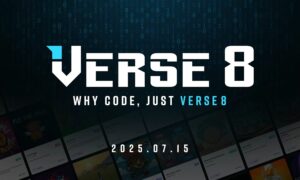In today’s rapidly evolving digital landscape, creative software technology has become the cornerstone of innovation across various industries. From graphic design to video production, from game development to artificial intelligence, these cutting-edge tools are transforming the way we create, communicate, and experience the world. In this blog post, we’ll explore the dynamic intersection of creativity and technology, delving into the impact of creative software on industries, businesses, and individual creators alike.
The Evolution of Creative Software
Creative software technology has come a long way since its inception. Early graphic design tools like Adobe Photoshop revolutionized the way images were manipulated and enhanced. Video editing software, such as Final Cut Pro and Adobe Premiere, brought professional-grade production capabilities to the masses. Over time, these tools have evolved, incorporating machine learning algorithms, real-time rendering, and collaborative features, enabling creators to bring their visions to life with unprecedented precision and speed.
- Graphic Design and Digital Art
In the early days of graphic design software, applications like Adobe Photoshop and CorelDRAW introduced users to the world of digital design. These tools provided basic features for image manipulation, allowing for simple edits and enhancements.
Over time, these programs have undergone significant enhancements. They now feature non-destructive editing, smart object capabilities, and advanced masking techniques. This evolution empowers graphic designers to create intricate, layered compositions with ease.
Furthermore, creative software like Adobe Illustrator has introduced vector graphics, enabling the creation of scalable, resolution-independent artwork, which is crucial for logos, icons, and illustrations.
- Entertainment and Gaming
Video game development has seen a profound transformation through the advancement of creative software technology. Game engines, such as Unity and Unreal Engine, have evolved to support not only high-end game development but also indie and mobile game development.
These engines now offer integrated physics engines, particle systems, and comprehensive asset management tools. Real-time rendering capabilities have brought life-like graphics and immersive experiences to video games, pushing the boundaries of what’s possible.
3D modeling and animation software, like Blender and Autodesk Maya, have advanced considerably in terms of usability and complexity. Artists can now create intricate 3D models, characters, and animations with more ease and precision.
- Film and Animation
In the film and animation industry, software like Adobe After Effects has evolved to incorporate 3D capabilities and motion tracking, enabling the seamless integration of computer-generated effects into live-action footage.
Specialized software for 3D animation, such as Autodesk Maya, has embraced real-time technology, allowing animators to see the final results more quickly and make adjustments on the fly.
Color correction and grading software, like DaVinci Resolve, now offer advanced algorithms for achieving cinematic looks, as well as support for High Dynamic Range (HDR) content.
- Artificial Intelligence and Machine Learning
Creative software has embraced AI and machine learning, enabling the generation of content by algorithms. Tools like Deep Dream and Runway ML use neural networks to create unique and often surreal images.
AI-driven music composition software, such as AIVA, allows composers to collaborate with artificial intelligence to create original music compositions.
- Accessibility and Collaboration
Cloud-based platforms and software-as-a-service (SaaS) models have become commonplace, allowing users to access their work from anywhere, on any device, and collaborate in real time. Google Workspace and Adobe Creative Cloud exemplify this shift towards accessibility.
Collaboration features in creative software enable multiple team members to work on the same project simultaneously, facilitating efficient workflows and streamlining the creative process.
Fostering Collaboration and Accessibility
One of the most significant advancements in creative software technology is the emphasis on collaboration and accessibility. Cloud-based platforms and real-time editing capabilities enable teams spread across the globe to work together seamlessly. This inclusivity not only promotes diversity in creative expression but also opens up new avenues for innovation.
- Collaboration
Collaboration features in creative software are transforming the way teams and individuals work together on creative projects. This aspect has become increasingly important in an interconnected world, especially with the rise of remote work and global teams.
Real-time Collaboration: Many modern creative software applications, such as Adobe Creative Cloud, Google Workspace, and Figma, offer real-time collaboration features. Multiple users can edit, comment, and work on the same project simultaneously, regardless of their physical location. This eliminates the need for constant file sharing and version control, streamlining the creative process.
Version Control and History: Collaboration features often include robust version control and history tracking. This allows creators to revert to previous versions of a project, review changes, and pinpoint who made specific edits. It’s crucial for maintaining the integrity of creative work.
Teamwork and Workflow Enhancement: Collaboration tools extend beyond editing. They also facilitate efficient workflows. Design software, for example, often includes features for sharing design libraries, asset management, and style guides to ensure consistency in branding and design across projects.
Remote Collaboration: The ability to work together on creative projects from remote locations has become indispensable. Creative software ensures that distance doesn’t hinder productivity, making it easier for teams with diverse skills and backgrounds to contribute to a project.
- Accessibility
Accessibility in creative software refers to making these tools and the content they produce available and usable to as many people as possible, including those with disabilities and diverse backgrounds.
User-Friendly Interfaces: Creative software is striving to provide user-friendly interfaces that are intuitive and easy to navigate. This allows both novice and expert users to access the software without steep learning curves.
Inclusivity for Diverse Audiences: Tools like Adobe InDesign and Illustrator have integrated features that help in designing accessible content, such as alternative text for images and proper heading structures for documents. This is especially important in ensuring that content is accessible to individuals with disabilities, including those who use screen readers.
Cross-Platform Accessibility: Creative software is designed to be accessible across different devices and operating systems. This means that users can switch between desktop, tablet, and mobile versions of the software without encountering major compatibility issues.
Cloud-Based Accessibility: Cloud-based platforms ensure that users can access their creative projects from anywhere with an internet connection. This feature is particularly valuable for remote and mobile users, as it eliminates the need for specific software installations.
Internationalization: To cater to a global audience, creative software offers internationalization features, allowing content creators to work with different languages, character sets, and text direction.
Cost-Effective Options: To enhance accessibility, some creative software offers free or more affordable versions, making these tools available to a broader range of users, including students, hobbyists, and small businesses.
Tutorials and Learning Resources: Many creative software providers offer extensive tutorials and learning resources, both from the company and the user community. This assists users in mastering the software and using it to its full potential.
The Future: Emerging Trends in Creative Software Technology
- Augmented and Virtual Reality (AR/VR)
Creative software is at the forefront of the AR and VR revolution. These technologies are transforming the way we experience digital content, bridging the gap between the physical and digital worlds.
Augmented reality software development platforms, like Apple’s ARKit and Google’s ARCore, enable creators to design immersive AR experiences for smartphones and AR glasses.
Virtual reality software, such as Unity and Unreal Engine, is being used to build realistic, interactive virtual worlds for gaming, training, education, and simulation.
- Generative AI and Neural Networks
Generative AI, powered by neural networks, is a groundbreaking trend in creative software. These algorithms are capable of generating content autonomously, ranging from images and music to poetry and even entire websites.
Creative software utilizing generative AI includes tools like OpenAI’s DALL-E, which generates images from text descriptions, and OpenAI’s GPT-3, which can assist in content creation and text generation.
Artists, writers, and musicians are collaborating with AI to push the boundaries of creativity and produce novel, unexpected works.
- Blockchain and NFTs
The intersection of creative software with blockchain technology has given rise to Non-Fungible Tokens (NFTs). NFTs are unique digital assets that can represent ownership of digital art, collectibles, music, and more.
Creative software is now integrated with blockchain platforms, allowing artists to create, authenticate, and sell their digital creations as NFTs. Marketplaces like OpenSea and Rarible have emerged as hubs for NFT trading and digital art curation.
- Real-time Collaboration and Remote Work
The COVID-19 pandemic accelerated the adoption of remote work and remote collaboration tools. Creative software has evolved to accommodate this trend with features that support real-time collaboration, enabling teams to work together seamlessly from different locations.
Applications like Figma and Adobe XD offer collaborative design and prototyping tools, while cloud-based solutions like Google Workspace and Microsoft 365 provide seamless real-time document editing and collaboration.
- Sustainability and Eco-Friendly Creative Tools
As environmental consciousness grows, there is a growing emphasis on sustainability in creative software. Tools are being developed to help creators reduce their carbon footprint and make eco-friendly choices in design.
Design software is integrating features that analyze and optimize projects for environmental impact, including considerations for energy usage, material waste, and carbon emissions.
- Cross-Platform Integration
The future of creative software will likely feature even greater cross-platform integration, making it easier for creators to work seamlessly across multiple devices and software applications.
Interoperability between design, 3D modeling, and animation software, for instance, will continue to improve, allowing for a more fluid creative workflow.
- Personalized Content Creation
AI-driven creative software will increasingly cater to personalized content creation. This means generating content that is tailored to individual preferences and needs, whether it’s personalized advertisements, recommendations, or content creation based on user input and data.
Conclusion
Creative software technology is not merely a tool; it’s a catalyst for imagination, innovation, and transformation. As we look to the future, the convergence of creativity and technology will continue to reshape industries and empower creators to push boundaries we never thought possible. Embracing these advancements is not just a choice, but a necessity for those who seek to stay at the cutting edge of innovation. In this ever-evolving landscape, the possibilities are limited only by our imagination.

































